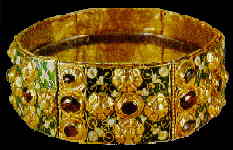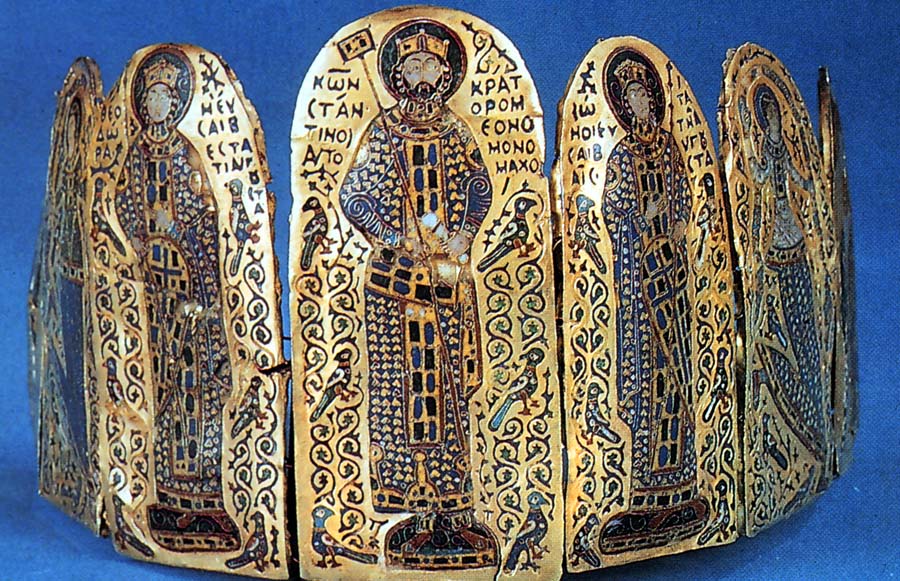The
Iron Crown of the first Holy Roman Emperor, Charlemagne, is held in the
Cathedral at Monza, near Milan, in Italy. In 1996, Italian scholars
asked ANSTO for assistance in accurately establishing the age of the
crown in readiness for forthcoming celebrations of the cathedral's 14th
centennial. Historical records had placed the age of the crown between
the late Roman and middle Ages, a spread of some hundreds of years.
Carbon dating is the most accurate means of dating ancient artefacts,
but the materials used in the crown - gold, a strip of iron, a nail
reputedly from the True Cross, and precious stones - are non-biological
and therefore cannot be dated using this technique. During the study
of the crown, however, it was discovered that its precious stones were
held in place by a mixture of beeswax and clay, a common adhesive of the
times. This provided the necessary biological material for nuclear
analysis. The solution Samples of less than a milligram were sent to
ANSTO for radiocarbon dating at the ANTARES (Australian National Tandem
for Applied Research) tandem accelerator. ANSTO's accelerator mass
spectrometry team prepared the samples chemically, combusted them and
then accelerated the carbon atoms in the tandem accelerator, using a
terminal voltage of approximately six million volts. The radiocarbon
atoms in the samples were then individually counted, using a particle
detector. All living things absorb carbon atoms during their lives, but
cease doing so at death. Atmospheric carbon contains a known proportion
of the radioisotope carbon 14. This isotope decays and the ratio of
carbon to non-radioactive carbon decreases after death at a known rate.
By measuring this ratio the age of the sample can be established. Ages
of up to 50,000 years can be established using this method. The high
precision analysis performed at ANSTO dated the age of the Iron Crown
at between 700 and 780 AD. The dating is close to the time in which
Charlemagne lived.


No comments:
Post a Comment